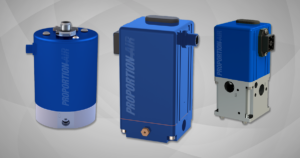Prevent Workplace Injuries When Using Compressed Air
Prevent Workplace Injuries When Using Compressed Air
Plant managers must be vigilant about numerous potential hazards in the workplace. These range from slips, falls and chemical hazards, to ergonomic issues and stress – there are many safety issues to consider on any given day to prevent workplace injuries.
With so much attention to more common situations, one hazard in particular can be easily overlooked: compressed air.
Safety industry veteran Kent Huber has tips to help prevent workplace injuries due to compressed air. Currently VP of Safety for FlexPAC, Huber’s 25 years of experience of safety consulting with Fortune 500 companies provides him with valuable insight into a potentially deadly area of workplace safety.
4 tips to help prevent workplace injuries and death, due to mishandling of compressed air
Keep cylinders secured and caps in place when not in use.
Cylinders become rockets if the regulators are left on and they tip over. Shearing off the valve makes life exciting in a plant! Your best bet is to remove all regulators when bottles are not in use and not secured on an approved cart. Leave the rocket ships to NASA.
Ensure the cylinders are fitted with the proper connections
Connections must be compatible with the cylinder rating or potential explosions can, and have, occurred. CGA rated connections mate with the psig rating of the cylinder and must be checked to make sure they are rated for the cylinder in use.
DO NOT use compressed air to clean or blow off dirt and metal chips
Compressed air has a very high pressure. It has the potential to force air inside of breaks in the skin. If air does enter through the skin and gets into the bloodstream an air bubble can form. Air in the bloodstream can cause a condition known medically as an embolism. Embolisms have been known to cause comas, paralysis and even death.
Never take compressed gas cylinders into a confined space
Leaking cylinder connections, hoses or valves can cause potentially explosive atmospheres in small or confined spaces. One story I’d like to forget involved this very situation. Two workers had taken their small cutting torch tanks into a confined space. The valves were slowly leaking oxy-acetylene gases while the two men were at lunch. Once they returned and lit their cutting torches it caused a massive explosion killing both men.
Knowing the dangers presented by compressed air could prevent you or a co-worker from suffering a severe injury.

 April Newsletter: Pneumatic Education
April Newsletter: Pneumatic Education  We’ve got the blues – and it’s a good thing
We’ve got the blues – and it’s a good thing